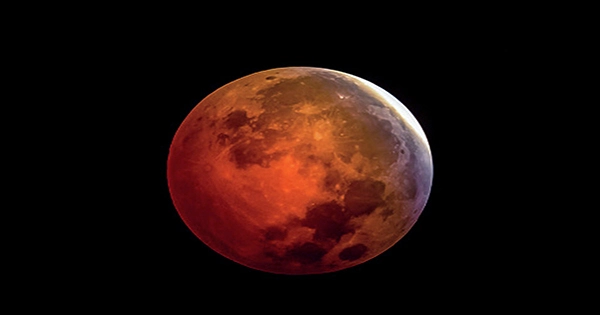The globe will witness an exciting and terrifying spectacle of a “Blood Moon” lunar eclipse on the evening of November 8 as the Earth’s shadow envelops its lone satellite for about one and a half hours, a renowned astronomer said here on Monday.
According to Prof. Bharat Adur, Director of the Akash Ganga Centre for Astronomy (AGCA) here, the lunar eclipse will be visible in totality in the northeastern states exactly 14 days (two Tuesdays) after the partial solar eclipse on October 25 but will only be partially visible in the rest of India in the evening as the sun sets.

“Tomorrow, the Earth’s looming shadow will cover the Moon and during this period it will appear a dark reddish colour, almost like a large drop of blood balanced in the sky… This phenomenon is called a ‘Blood Moon’ and it’s an exciting spectacle,” said Prof. Adur.
He advised people to observe it wherever possible because it would be the last total lunar eclipse and the next one wouldn’t come until September 7, 2025.
The Earth will come between the Sun and Moon and the blue planet’s monstrous shadow — from a staggering distance of 3.93 lakh kms — will shroud its small natural satellite, partially or fully, depending on the angle of alignment from where it is viewed, Prof. Adur explained.
The Sun is approximately 109 times larger than Earth and is located more than 148 million kilometers away, while the Earth is almost four times larger than the Moon and is located an average of 3,85 lakh kilometers away from it.
“In a total lunar eclipse, the Moon is entirely blanketed by the Earth’s darkest shadow, called the ‘umbra’, and at this time, the Moon appears a dark-reddish colour, or what is called the ‘Blood Moon’ phenomenon,” Prof. Adur said.
The only sunlight that reaches the Moon during a lunar eclipse goes through the Earth’s atmosphere, giving the Moon the appearance of being reddish. This phenomenon is known scientifically as “Rayleigh Scattering.”
People in India, Pakistan, Afghanistan, sections of Asia, Russia, the Americas (North and South), Australia, the North Atlantic and Pacific Ocean regions, and portions of the Middle East can observe this celestial event, which is the second since the last partial solar eclipse (October 25).
Prof. Adur reassured that there is absolutely no damage in observing the rare “Blood Moon” on Tuesday with naked eyes or with binoculars, which would accentuate the reddish color, notwithstanding the dreadful myths or very religious features linked with any eclipse (solar or lunar).
The final eclipse of 2022 will be visible in totality on Tuesday in the northeastern districts of India, including Kohima, Agartala, Guwahati, and other locations worldwide.
He said that the thrilling beginning phases of both the partial and total eclipses won’t be visible in most other parts of India because the Moon will be below the horizon during the eclipse hours.
Only the partial phase may be seen in Mumbai, Kolkata, New Delhi, and Chennai, and only 14% of the Moon’s obscuration can be seen at 18.03 hours in the setting sun in the nation’s commercial capital.
However, the Moon will be seen 60 percent covered in Nagpur, 66 percent in Srinagar, and in varying degrees in other cities. In case people miss the ‘Blood Moon’ on Tuesday, they can wait for October 28, 2023, when there will be another partial lunar eclipse that will be visible in some parts of the country, Prof. Adur smiled.
















